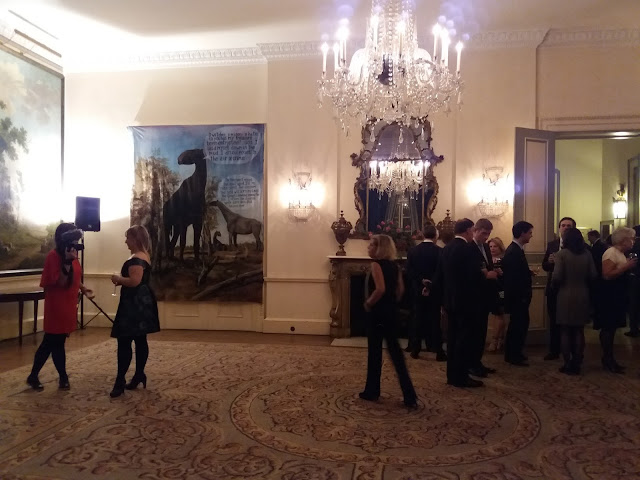Vienna 1900
Art from the Leopold Collection
The Leopold Museum is presenting an exhibition of Viennese art at the turn of the century, titled "Vienna 1900".

The Jugendstil, Vienna’s Art Nouveau movement, endeavoured to encompass all areas of life within a so-called „gesamtkunstwerk” („total work of art”). Its main exponents Gustav Klimt, Koloman Moser and Josef Hoffmann are synonymous with the art of the Vienna Secession around 1900. This new presentation of the Leopold Museum’s holdings – complemented by several significant works on loan – features the works from the Vienna Secession together with paintings and prints from Expressionism to the end of the First World War (Egon Schiele, Oskar Kokoschka, Anton Kolig, Herbert Boeckl and many others) as well as several fascinating examples of Wiener Werkstätte design. Furniture, silver, glass and jewellery are presented together with paintings and graphics, showing what could be termed the most exciting era in the history of Viennese art as a unique aesthetic experience.
The unconventional manner in which this exhibition covering an entire floor of the museum is set up, opens exciting vistas for those well-versed in the subject and a compact introduction to the theme and the epoch to those new to „Vienna around 1900”. While it will help tourists gain valuable insights into the spirit of Vienna around 1900, the local public will have the opportunity to rediscover the Leopold Collection’s holdings from the turn of the century.

Emphasizing his close relationship to the Leopold Collection, curator Dr. Diethard Leopold says, „I grew up with the collection; I know it to the core, better than most others.” Dir. Mag. Peter Weinhäupl, on the other hand, stresses the importance of providing the visitor more information, designing a more attractive exhibition architecture and, if possible, also including new media art in the collection. According to Mr. Weinhäupl, „The visit to the museum should be just as enjoyable an experience as looking at the artworks.” The artworks have been partially put together in the form of installations and the light shafts have been converted into „active areas”, thus integrating them into exhibition’s architecture. Different levels of the building, ramps, partition walls, etc. contribute to a novel experience of the exhibition spaces.
„Austrian art from the beginning of the twentieth century has been a strong influence for on generations of artists until today. The Leopold Museum holds a large number of works from this period, to which an entire show has been dedicated. As partners of the Leopold Museum, we are very pleased to support this exhibition,” says Director General Dr. Günther Geyer, Wiener Städtische Versicherung AG Vienna Insurance Group.
For Dr. Maria Rennhofer Cultural Head of Ö1, the exhibition’s main focus „Vienna Around 1900” covers „an important chapter in Austria’s art history, no other Austrian museum has a comparable collection of this era. It takes us back to the roots of twentieth century Austrian art and reminds us of its international status.” Maria Rennhofer also addresses the fact „that the collection has repeatedly inspired engagement with the chequered history of the twentieth century and its effect on the fates of former art owners and collectors.”

The exhibition is on level 4, the topmost floor of the museum. Its position offers a splendid visual link to „Vienna around 1900”. The view from the panorama windows – from the Art History Museum to the New Hofburg – put Vienna’s Ringstrasse in an overall context. The decision to build some of the city’s famous Art Nouveau buildings was made in the course of the urban renewal in the last third of the nineteenth century. Dr. Peter Weinhäupl has conceived a central information room, which also contains a lounge-like platform that provides unique views of late nineteenth-century buildings and the Museum Quartier’s new architecture. City maps, historical photographs and films presented in this exhibition space document the groundbreaking achievements of Vienna’s architects around 1900 – from Otto Wagner to Adolf Loos.

Relevance to our times, cross connections to related themes or parallels between the art in Vienna around 1900 and other styles are the integrative elements in the exhibition’s concept. A search object is placed in each room. How these objects relate to the exhibition is explained in a folder as well in the last room. These exhibits are a wonderful instrument for building up suspense and a superb pedagogical tool for the exhibition’s art education programme.
In a way, „Vienna at the turn of the century” was also a „programme for a hundred years” as the achievements of art around 1900 have been a lasting influence on twentieth century art. The floral elements of the Secession and Jugendstil are just as sensitive and playful as the furniture designed by the Wiener Werkstätte is cool and sophisticated. The exhibition clearly communicates this „evolution in taste” which began around 1900. Expressionism’s profundity (Egon Schiele, Oskar Kokoschka, Richard Gerstl) is equally highlighted as the influences of psychoanalysis on the „undiscovered country of the soul” and the exploration of „sex and character”. The grand furnishings of the aristocracy was the motive to provide information about the historical background and social movements in the last days of the monarchy. The end of the First World War concludes the exhibition. The presentation in the new rooms is based on an informal chronology of „the end of taste”. The exhibits are arranged thematically around the most important artistic inventions from what can be termed as the most fertile era in the history of Austrian art.










































